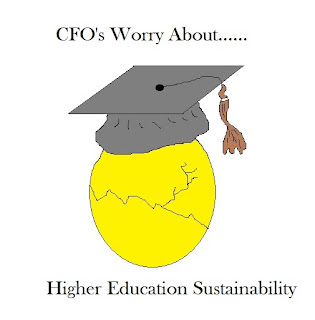Credit-rating firm Moody’s Investor Service continued to keep the
negative outlook for higher education into the next year (1).
They cite slow job growth, an uncertain labor market, and slow revenue
growth. Such schools are fighting over
revenue and have already cut greatly over the past few years leaving them
little room to do more. Personal income
is not rising making it difficult with high student loan debt and interest rates
to send more people to college. According
to Moody’s research spending is also expected to decline.
Some universities like Minnesota State University Moorland and
University of District Columbia are pondering cutting core academic programs
based upon needed budget cuts (2).
The trend is part of a need to reduce
expenses in expense laden campuses. Decisions include the cutting of academic
programs that once made up the core of university learning. Some are concerned about what this trend means
in the long run.
Indiana state universities are seeking to deal with a $141 million revenue
shortfall and are pushing for a 2% cut in educational budgets (3).
It is hoped that the impact will be
minimal and not damage students. There are some attempts to find new and
creative ways around the budget crisis but no concrete concepts have come
forward. Regardless, it appears that universities will suffer in the future
from a lack of resources and constant questioning of their impact.
There appears to be a number of trends that are starting to be
addressed and not all of them have to do with education itself. We know through
the budget crisis government is under pressure to increase revenue and reduce waste.
They are trying to spur economic development through trade and national
development. Changes in spending are likely to impact multiple sectors of the
economy in both positive and negative ways. Education will be impacted in this
process.
The second major problem is the cost structure of universities
themselves. They are large, have great sports teams, expensive facilities, and
a limited ability to adjust to the new economic realities. Yet as state revenue
squeezes, the costs rise, and their effectiveness becomes questioned in a
higher technology and science oriented environment, greater pressure will come
to bear upon traditional models.
Universities ability to adjust to this pressure while finding new ways
of competing and pushing relevance will impact their viability. It must be
remembered that changes in the university systems is not something new and has occurred
throughout the life of the country.
Early education was informal and based on apprenticeship. First colleges were religious and private but
eventually moved into public universities. These public universities exploded
in size and cost during the good years and may need to change again.
Change must come with quality. Recent educational reports have
indicated that American students are falling behind in STEM as well as other
areas. High Schools are not preparing students to become researchers,
scientists, and technology workers at the same level as they did in the past.
Efforts are underway to address this problem and push for changes in
educational processes.
No matter what happens, we know that the current path is unsustainable.
There will be change, and the decisions that are made today will impact whether
this change is smooth or bumpy. Pro-activity
encourages decision-makers to think about what can be changed now and slowly
adjust the system to ensure that it is keeping up with current environmental
needs. Failure to be proactive means a sure bumpy ride in the near future.
Perhaps an educational calamity.
